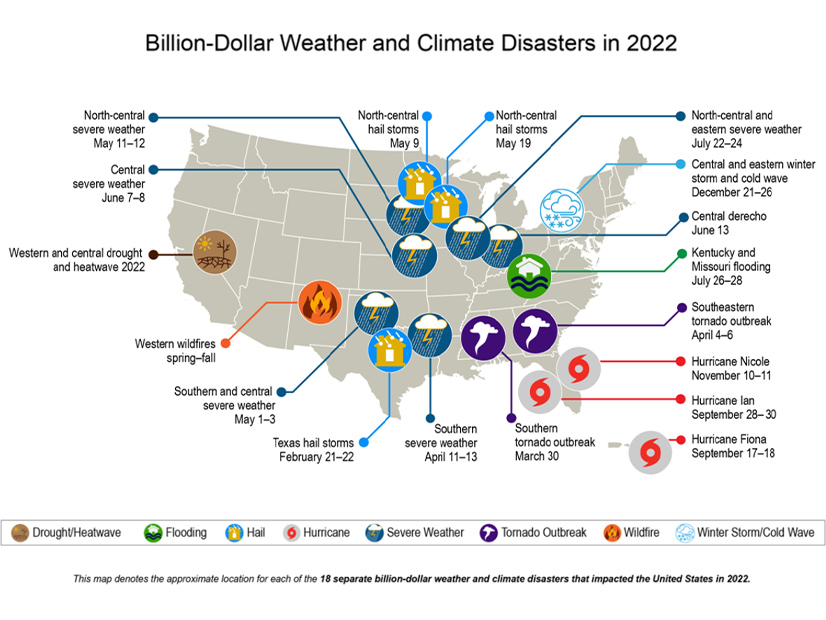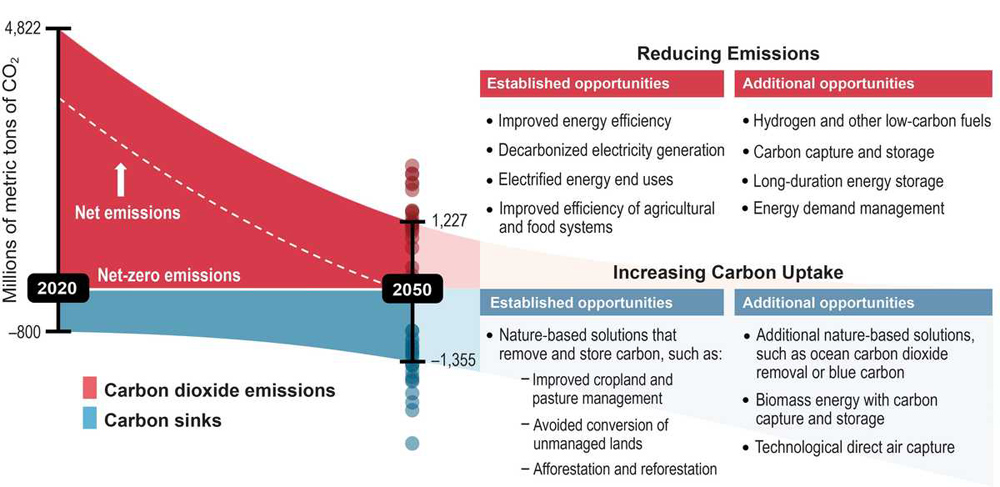According to the fifth National Climate Assessment (NCA5) released Tuesday, a person born in North America in 2020 will experience more climate hazards on average than a person born in 1965.
A 2-degree Celsius (2.7-degree Fahrenheit) increase in global temperature could mean that over their lifetime, that 2020 baby could experience a potential doubling of wildfires, hurricanes and drought and a tripling of heatwaves, along with other increases in flooding and crop failures.
At the same time, the southeastern states could experience 25-50 more days a year with temperatures over 95 degrees Fahrenheit, while most of the country could see annual precipitation rise 5-10%. A 4-degree Celsius rise in temperatures could kick that increase up to 15%, according to the report.
Extreme weather already is taking a major toll, with 18 events — wildfires, tornados, floods, winter storms and hurricanes — causing more than $1 billion in damages each in 2022, the report says, and each of those events had an impact on the U.S. electricity system.
Extreme heat or cold increases electricity demand while also potentially decreasing the grid’s ability to provide vitally needed power, according to NCA5.
Winds, floods, ice and wildfires can take down power lines, while extreme heat can reduce the grid’s transmission and distribution capacity. Cloudy or stagnant weather can reduce wind and solar production, while extreme winter storms can freeze gas supply systems, and droughts can cut hydropower output.
The report also includes a hopeful assessment of climate action, supported by the policies of the Biden administration and the billions in clean energy and resilience funding in the Infrastructure Investment and Jobs Act (IIJA) and Inflation Reduction Act (IRA).
The report’s chapter on energy supply, delivery and demand notes that “federal, state, local, tribal and private-sector investments are being made to increase the resilience of the energy system to climate-related stressors.
“Ongoing investments will need to include improvements in energy-efficient buildings; technology to decarbonize the energy system; advanced automation and communication and artificial intelligence technologies to optimize operations; climate modeling and planning methodologies under uncertainties; and efforts to increase equitable access to clean energy.”
The administration backed up that ambitious vision with an announcement of $6 billion in funding for a range of clean energy and resilience funding, as outlined in a White House fact sheet.
The Department of Energy is opening the second round of funding for its Grid Resilience and Innovation Partnership (GRIP) program that will offer $3.9 billion from the IIJA for projects that “will modernize the electric grid to reduce impacts from extreme weather and natural disasters, increase capacity and unlock renewable energy resources.”
The first round of GRIP funding, announced last month, awarded $3.46 billion to 58 grid improvement projects.
EPA soon will announce a $2 billion funding opportunity through its Environmental and Climate Justice Community Change Grants program. With dollars from the IRA, projects will focus on community-driven efforts to “deploy clean energy, strengthen climate resilience and build community capacity to respond to environmental and climate justice challenges,” the fact sheet says.
The Interior Department will get $100 million in IIJA funds for water infrastructure upgrades for drought resilience in the West, part of which will be used for hydropower upgrades.
Choices Made Today
The release of NCA5 likely is a strategic move as the U.S. prepares for the United Nations Climate Change Conference (COP28) kicking off in the United Arab Emirates (UAE) in just over two weeks. Ahead of the conference, the U.S., European Union and UAE are trying to rally support for a global pledge to cut greenhouse gas emissions by tripling renewable energy generation by 2030, according to a Reuters report.
A key message of the U.S. report is that the degree of warming, and its effects on Americans, will depend on choices made now.
The energy sector is pivotal because while changes in technology can reduce emissions, they also can increase system vulnerabilities as demand increases and shifts, the report says. Climate change could drive major increases in power demand, according to the report. The western U.S. could see demand jump 50% by 2050, while demand in the eastern part of the country could rise 30-40%.
Between 2050 and 2100, those increases could soar by as much as 200% in the Southwest and by 150-175% along the East Coast.
The report’s potential solutions for promoting energy system resilience include the adoption of microgrids and storage to reduce the risk of power outages, adopting building codes that increase efficiency and cut energy demand, and decarbonizing the grid with zero-emission technologies.
President Biden has set a 2035 goal for the U.S. electric system to be powered 100% by clean energy. But NCA5 predicts that by 2050, solar, wind, nuclear and other renewables will account for only about 75% of U.S. electricity generation, with natural gas and coal still in the mix.




